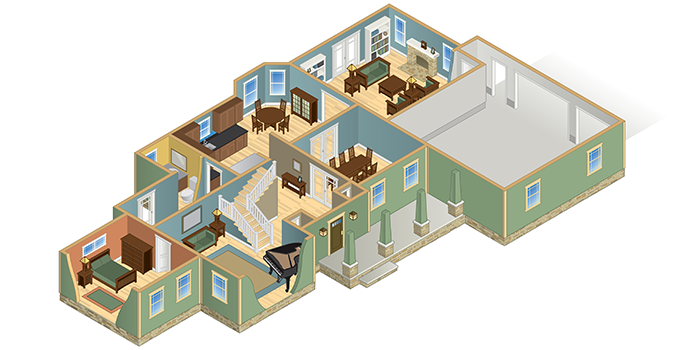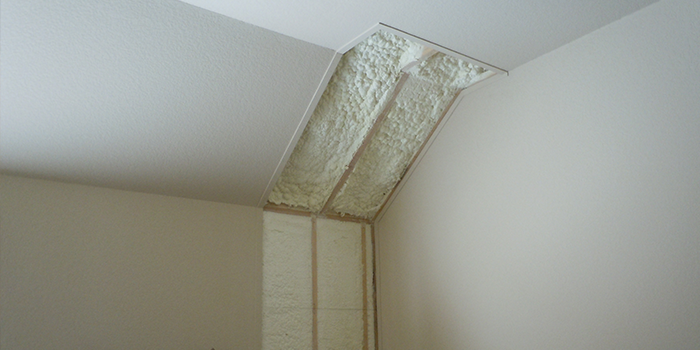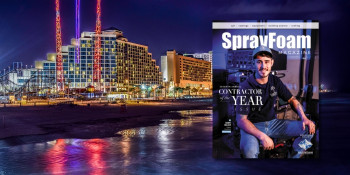Building Envelopes and SPF

Back to Education Center | Architect's Guide
Spray Foam in the Building Envelope
Generally speaking, a building envelope is the exterior shell of a given structure (i.e. exterior walls, roof, and floor). More specifically, a building envelope consists of the entire system of building materials and design elements that control a structure’s air movement, water vapor movement, and temperature. Components like insulation, air barriers, and vapor barriers must work in concert to maintain a more consistent, more comfortable, and healthier interior environment. Numerous cutting-edge materials and construction practices are being utilized to extend the sustainability and durability of residential and commercial structures.
Build Tight, Ventilate Right
Long-time builders and design professionals may advocate the old adage that, “a building needs to breathe.” For decades, ventilating attics and crawl spaces has been the standard and code-required practice of residential design and homebuilding. In reality, it was the inability of traditional building materials to address temperature, moisture, and airflow issues that allowed the “breathing” paradigm to become routine and unquestioned.
Despite that longevity, the practice of ventilating these areas is now beginning to lose favor in building science circles. Instead, building professionals are acknowledging that a reliance on ventilated attics and crawlspaces, or a leaky living space for that matter, isn’t the optimal methodology. Now, cutting-edge building materials and modern building science techniques have rewritten the rules and the new mantra is, “build tight, ventilate right.”
The implementation of modern materials and techniques in the building envelope can produce a home or building that is more comfortable, healthier, and more energy efficient by thoroughly insulating and sealing the building envelope.
SPF insulation is a far more versatile and more effective building material that either fiberglass batt or blown cellulose insulation, as it not only insulates, but also provides an air and moisture barrier. Spray foam can vastly benefit a home or building’s operational performance, energy consumption, structural integrity, and air quality.

Building Tight Homes
When it comes to homes, two of the main culprits for an inefficient and uncomfortable living space are ventilated attics and crawlspaces. The main issue with ventilating attics and crawlspaces is the free exchange of outside air with inside air, which allows the pleasant, clean, conditioned indoor air escapes from the living space. So, these spaces are filled with hot and frigid air during summer and winter months, respectively. Because most heating and cooling equipment and ductwork are located in attics or crawlspaces, the outdoor air can reduce the temperature of warm duct air (during the winter) or increase the temperature of cold duct air (during the summer), simply due to heat transfer. These effects not only cause the air conditioning system to work harder, but also can result in condensation forming within the ducts, potentially leading to mold and negatively impacting the health of occupants. Additionally, outside air brings moisture, pollen, airborne particulates, and pollution into the home, not to mention the introduction of insects, rodents, and other pests through the vent openings. Insulating and sealing attics and crawlspaces with spray polyurethane foam is the most effective way to prevent these unwanted problems.





























